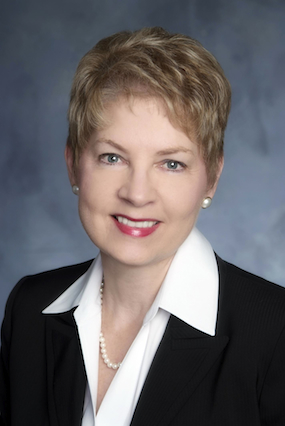 Less than four months ago, Sprint brought on Julee Thompson as chief healthcare executive. A registered nurse with an MBA and more than 25 years of experience as a clinical leader and consultant, Thompson brings a new perspective to the nation's third-largest wireless carrier.
Less than four months ago, Sprint brought on Julee Thompson as chief healthcare executive. A registered nurse with an MBA and more than 25 years of experience as a clinical leader and consultant, Thompson brings a new perspective to the nation's third-largest wireless carrier.
"I was definitely thrilled about Sprint opening up to someone coming out of the provider side," Thompson tells MobiHealthNews.
As Sprint CEO Dan Hesse said during his keynote address to open the 2010 HIMSS conference, "If I had to pick the one industry facing the biggest gap between need for change and use of wireless to facilitate that change, it would be healthcare." Hesse said that healthcare spending on telecommunications services would increase from $8.6 billion to $12.4 billion in the next few years, and two-thirds of the growth would come from wireless apps and services.
"Wireless solutions are excellent for healthcare," Thompson agrees. "We are in transition to much more mobile and virtual healthcare system," according to Thompson. "I like to refer to it as 'minding the gap.'" Telecommunications technologies can help fill the gap between the current and future healthcare systems, she explains.
Thompson sees three categories of mobile and wireless health: personal wellness, personal observations of living—also known as observations of daily living or aging in place—and chronic disease management. "In each of the [first] two areas, you see more self-motivation coming along," Thompson says.
To the Sprint healthcare executive, the most promising aspect is the personal measurement of daily living because it can affect the big picture, namely population health. "We're helping patients become active participants in their care," Thompson says.
But, as a nurse, Thompson also likes having the ability to monitor patients remotely. "Currently, we're very encouraged by the monitoring," Thompson says. Imagine an obstetrician being able to monitor a patient in labor before the physician can get to the hospital.
She also is bullish on the burgeoning tablet market, even though Sprint currently does not support the iPad, which so far is dominating its rivals in healthcare. "We see tremendous opportunity [with tablets] in imaging," Thompson says, especially for providers in rural areas and for stroke patients and others for whom every minute counts. With the advanced processing power and sharp displays of touch-screen tablets, doctors hundreds of miles apart can manipulate images together and share information back and forth, Thompson notes.
Sprint is not sitting back waiting for the direct-to-consumer market to perk up. Instead, the company is marketing its health services to large employers, including at Sprint's own corporate headquarters in Overland Park, Kan. "We utilize several of our partners," Thompson says, including BodyMedia for wellness initiatives.
(Ed. Note: A Sprint spokesperson informed MobiHealthNews via email that the mobile operator was no long working with BL Healthcare.) Other partnerships included one announced in February with remote health management services company BL Healthcare, to provide 3G connectivity for BL's telemedicine devices, but the operator is no longer partnered with BL. The operator also announced a partnership with Ideal Life in February at HIMSS this year. In June, Sprint launched its M2M Command Center, a secure web portal for remote management of thousands of wireless devices for management of chronic health conditions.
Expect more initiatives like these as Sprint and other nontraditional players in healthcare attempt to innovate in a sector badly in need of improvement. "As challenging as healthcare reform is, I think there are tremendous opportunities," Thompson says.














